Do you ever dread when it’s time to review for an assessment? More importantly, do your students? Tara Maynard, a middle grades math teacher and 24-year veteran of the classroom, has been crafting review activities for decades designed to provide meaningful practice without totally boring students. We sat down with her to ask what makes for a good review period and some of her favorite activities she keeps going back to.
Designing a Review Activity
Tara explains that there are a few keys to designing an effective review activity. First, you should be armed with data that tells you where students are weak and where there is already good understanding. In the math context, this data might come from a Desmos or Socrative activity, a practice quiz, or another formative assessment. “I probably have some kind of data that tells me what skills we’re doing well and where we’re not 100%. So then the review focuses where we need it,” she says, “I would estimate that 75% of the review is on what they’re not grasping well and the rest is continued practice on what we’re already understanding.”
She also values activities that are self-checking and allow for choice and partner-based work, rather than those that require students to work in isolation. This maximizes the time students spend actually reviewing rather than waiting. It also maximizes her time as a teacher, so if she needs more time working with a student or group on an area of struggle the others can continue independently. Finally, she recommends incorporating movement so students are up and out of their chairs.
A good review activity also reinforces other executive functioning skills, says Tara, including organization and developing strong study habits. “Usually on that review day, I make them stop and think about what’s going to be on the test so they can consider their approach. I often tell them, ‘Don’t practice the things you already know how to do, practice where you’re unsure so I or your partner can help.’”
With these factors in mind, we asked Tara to share a few of her favorite activities. While we have provided short descriptions here, Tara has also shared Google Slides with more creative ways to review and helpful examples.
Molly Mistakes
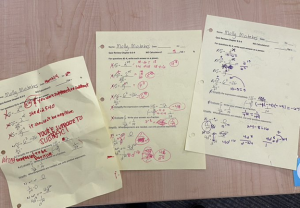
The Concept:
- Create a review assignment or select a set of problems.
- As the teacher, go through the assignment and do the problems incorrectly (you can do all or some of them incorrectly).
- Have students work in pairs and give them the power of correcting your mistakes and providing feedback.
- Students can redo problems as extra practice.
Why it works
This activity really helps students dig into misconceptions, while working collaboratively with a partner. “Kids will go, ‘oh that’s what I would have done!,’” Tara explains, “And now they can visualize why it’s incorrect.”
Around the Room
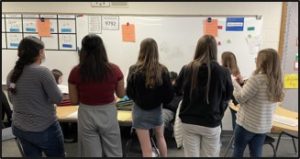
The Concept:
- In a Word or Google document, create the 1st problem on the bottom half of page 1. Then type the answer to the 1st problem on the top of page 2. Type the 2nd problem on the bottom of page 2 and then the 2nd answer on the top of page 3. Continue this pattern until the last problem’s answer is typed back on the top of page 1.
- Put a random letter at the top of each page so you can make an answer key.
- Hang them around the room, but do not hang them in order.
- Students start anywhere and solve the problem on the bottom half, then find the answer on another sheet of paper.
- They should end up back where they started.
- Alternative: You could also print these 4 or 8 pages to 1 sheet of paper, cut them up and use them as individual or partner activities. I call them circle cards because they will form a circle when completed correctly.
Why it works
The activity is naturally self-checking, since if they don’t find an answer around the room the student knows they need to ask for help. Tara also values the movement inherent in this activity, averting the boredom that can come from staying in their seats.
Partner Compares
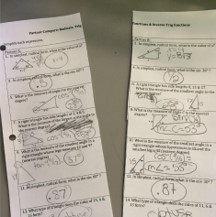
The Concept:
- Create two columns of problems. While the problems are different, each row must have the same answer/solution.
- Partners cut the paper in half vertically so they each have a column.
- Partners work independently but can check answers as they go. They are encouraged to help find each other’s mistakes if answers do not match.
- Since answers are the same, for each row, they know if they need help or not.
Why it work
This activity offers a great combination of independent and partner work. Students are encouraged to solve the problems independently, and can’t just copy an answer, but still have the support of a partner when needed.
Pre-Quiz Socrative Review
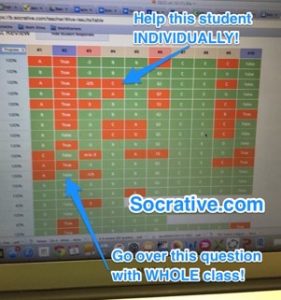
The Concept:
- If there is additional time at the end of a period before a test or quiz, or even before the test or quiz on the day, have students complete a practice quiz using a tool like Socrative that allows you to see their responses in real time.
- Prior to giving the quiz, you then know if there is still a concept the class as a whole or an individual student is struggling with and can do a quick review as a class before distributing the assessment.
Why it works
This activity offers a quick way to get a broad overview of where understanding is, and isn’t, allowing for a super targeted final review before the summative assessment.
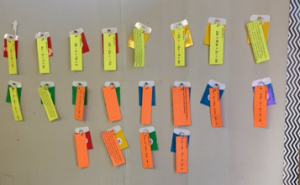
- A set of practice problems are cut apart and placed into envelopes.
- The envelopes are pinned to a board at the front of the classroom and grouped by type of question.
- The envelopes can also be grouped by skill level.
Why it works
Students have to self-identify where they’re struggling the most so they can prioritize that area of review.
Where Review Goes Wrong
Just as important as what works well, it’s also been important to Tara to learn from activities that haven’t been effective over the years. When doing interactive activities, organization is key so that there is no wasted time. “Even things as simple as color-coding cards when we’re doing a matching activities. Inevitably cards will be dropped and it saves time to not have to sort them again,” she explains.
She also keeps an eye out for wasted time. For example, when she started using a Jeopardy game as a class they would only be able to get through 6 problems in 45 minutes. By switching it to partner Jeopardy where two students are playing together on a Chromebook, students can keep their own running scores and they even figure out their own rules. “They just get so much more done. Making activities more self-paced than class-paced has been so beneficial.”
Tara Maynard is first a learner then a teacher who thrives on challenges. This is her 24th year teaching 8th grade math at Creekside Middle School in Zeeland, MI. She started flipping her classroom in 2012 in an environment with iPads 1:1. Her passions are technology, math and mentoring student teachers. Tara is currently addicted to Flipped Classroom, Twitter, and Moomer’s Ice Cream.
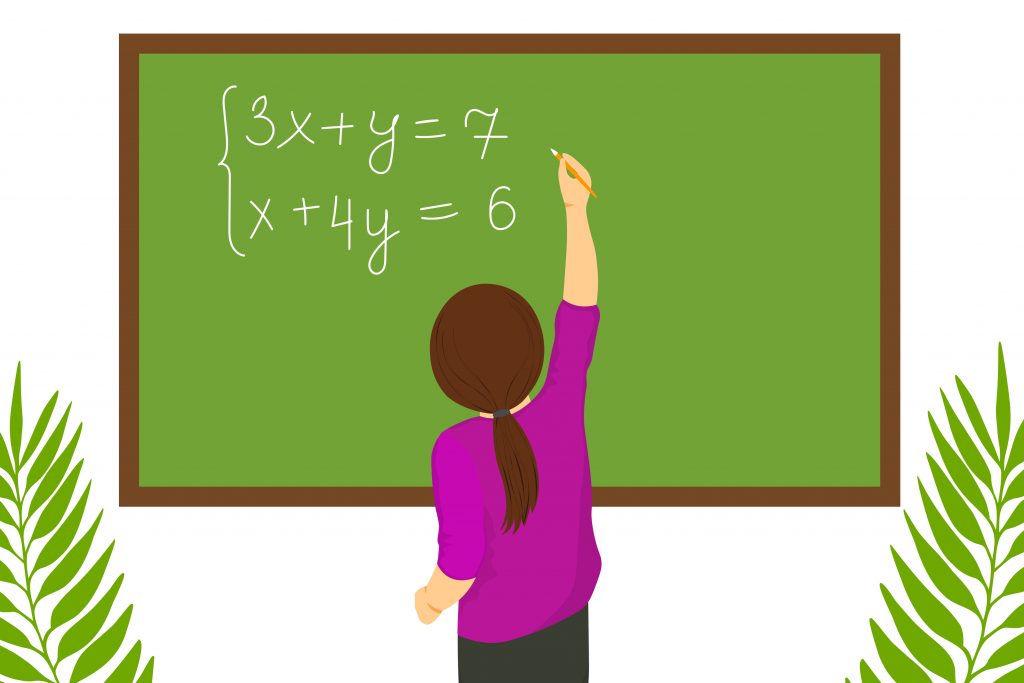
This is very helpful in thinking how to review in the classroom. It can be easy to get sidetracked and review things that the students don’t need. Though it seems obvious to focus the majority of the time on the information the students struggle with, it can be easy to overview the whole unit rather than focus in on the problem. I also enjoy the tips on focusing the time of activities so that they can be efficient as possible.
One activity that really stood out to me in this article was the idea of using task cards. When each individual student has a role, as well as the ability to choose, I believe they will gain a lot more than if they were assigned a role or just given a review sheet to work with. I really appreciate that you included an explanation as to why these activities worked for you, as choosing activities to do with different sets of students does require that information. I also really enjoy the level of partner work presented, each student plays a pivotal role in the activity rather than the activity being set up to where one student has the opportunity to take charge.
I’ve always been curious about different approaches to review and how to most effectively review things in the classroom. There are several activities and strategies presented in this article, but I think the one that most stood out to me was “Molly Mistakes”. I’ve never seen a review activity in this format, and I think it offers a good chance for collaboration with a partner while also letting students take the reigns and learn through their corrections.
I really enjoyed the “Pre-Quiz Socrative Review” as it is a way to assess student knowledge before receiving a grade. The activity could be helpful for students to reflect on what they know and use that as a guide on what areas they need to review before the assessment. As a teacher, this is also helpful since it is a way to analyze what concepts the classroom as a whole are not understanding.
I would love to use the Pre-Quiz Socrative review to assess where students are at with their grammar. There are so many concepts that are addressed in a single semester, and it is hard to see the most common issues in an efficient manner. When I’ve been assisting students this semester, I’ve helped with parallel structure, commas, embedding quotes– it’s been a lot. This would help pin down the area that needs the most help so that all students can benefit from extra practice.
For my review games in the past, I have only done Kahoot! since that seems to be the only thing that kept my students focused in their review. I love the Molly Mistakes activity, because a lot of times students think we know everything and are afraid to make mistakes. This allows students to see that we make mistakes too, and it gives them independence and some fun in correcting their teacher’s “mistakes”. I feel like my review activities have failed in the past because they were not organized, and didn’t take up a sufficient amount of time. Thank you for providing these ideas, I will definitely be using them in my future classroom!
Reviewing in my classroom is not something I feel I have been conscious of outside of study guides for exams at the end of a unit. I feel that social studies classrooms can be fast paced which can make conscious review difficult to implement into a busy class schedule, but I think these are excellent review strategies I would want to try in my classroom. I specifically liked the “Molly Mistakes” activity and would likely use it for essay writing in a social studies classroom providing my students with an example of a poorly written essay and having them reverse engineer it to improve it and learn from the original writer’s mistakes.
Reviewing is such an important part of studying material, and I feel that students and teachers alike struggle to know how to do so effectively. Something that I hadn’t thought about was doing problems incorrectly for students to grade and correct. This almost backwards approach really tests students and gets a good idea of the level of comprehension the students possess. Having this be extra credit or count towards the grade is also great incentive for students who are motivated by grades.
My high school experience with review games was mostly limited to Kahoot and Jepordy, so this article was quite amusing as I wasn’t sure about the other options for me as a teacher. I really enjoyed the “Task Card” strategy because it prioritizes the areas in which students need to gain further understanding. I also enjoyed the formatting of this article because it is honest about what could go wrong as a teacher. Above all, these strategies are unique, fun, and they seem to prioritize instruction and review over the “game-y” aspect.